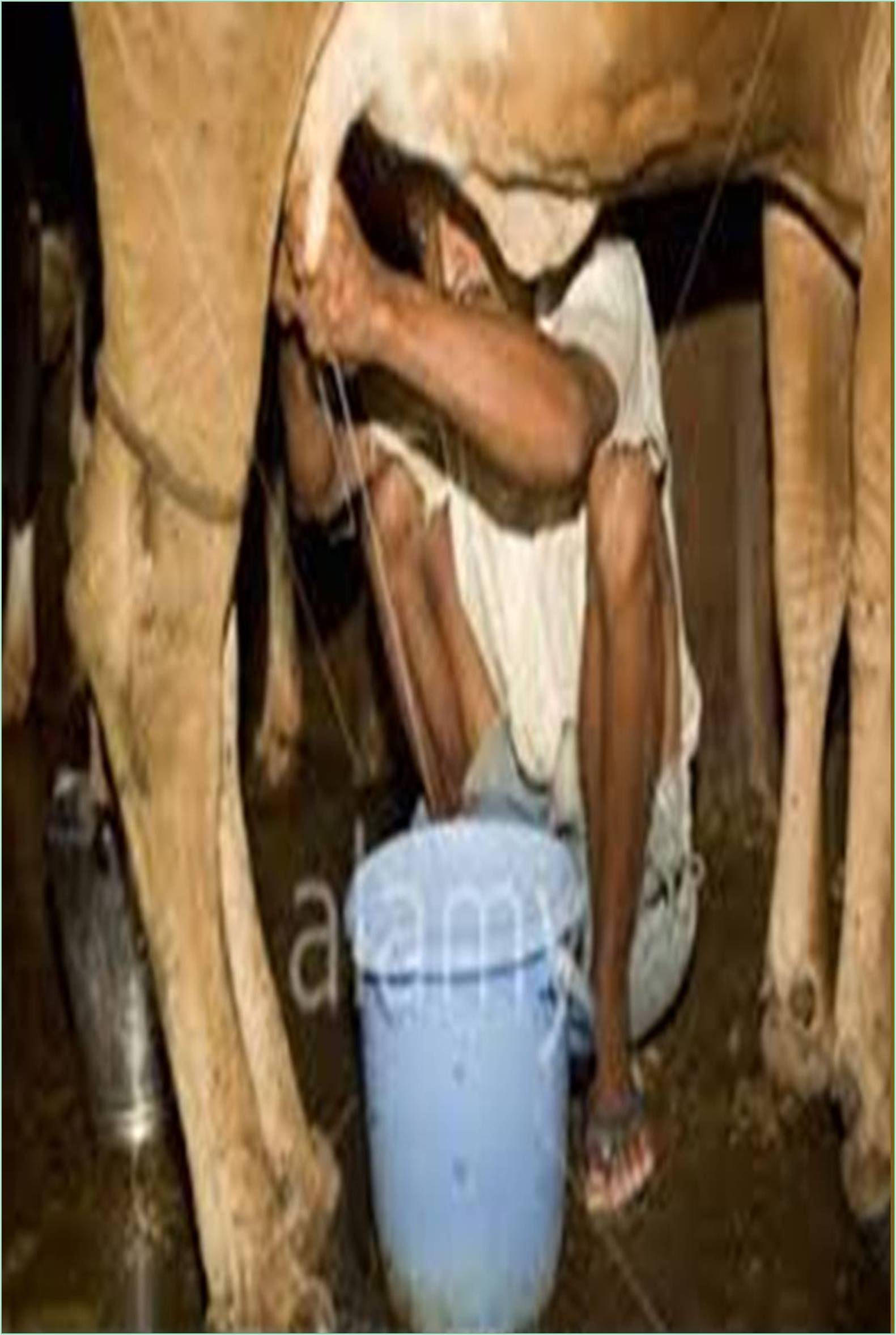



Received: 05-Jun-2023, Manuscript No. GJDFM-23-101271; Editor assigned: 07-Jun-2023, Pre QC No. GJDFM-23-101271 (PQ); Reviewed: 21-Jun-2023, QC No. GJDFM-23-101271; Revised: 04-Aug-2023, Manuscript No. GJDFM-23-101271 (R); Published: 11-Aug-2023, DOI: 10.15651/GJDFM.23.8.085
This study aimed to investigate the effects of Azolla feeding on daily milk production in smallholder dairy farm in Kilinochchi district, Northern province, Sri Lanka. Data were collected from a semi-intensive management smallholder dairy farmer who fed Azolla mixed with rice bran to the crossbreed milking cow fed with Azolla for the first time from 10th April 2023 to 9th May 2023. The daily milk production from the selected cow was recorded, and the thickness of milk and lactometer reading was also examined before and after Azolla feeding. The availability and nutrient composition of Azolla were considered in the analysis of the data. The study focused on a crossbreed milking cow fed with Azolla for the first time.
Results showed that the daily milk production of the selected cow gradually increased after the introduction of Azolla in the feeding regimen. The initial daily milk production was 2000 millilitres, which gradually increased to 2400-2500 millilitres in the last week of the study. The lactometer readings and milk thickness also showed improvement after the Azolla feeding.
The study recommends the use of Azolla in the feeding regimen of smallholder dairy farmers in Kilinochchi district. Azolla is a cheap and locally available alternative feed stuff, which can be mixed with rice bran to improve the palatability and increase the intake. Azolla also has a high nutrient content, which can contribute to the improved milk production of dairy cows. Smallholder dairy farmers can benefit from the use of Azolla, especially during the economic crisis when commercial cattle feed prices are high.
In conclusion, the introduction of Azolla in the feeding regimen of dairy cows can significantly improve the daily milk production in smallholder dairy farms in Kilinochchi district, Northern province.
Dairy farmers can benefit from the cheap and locally available alternative feedstuff, which can also improve the quality of milk produced. This method of feeding may be beneficial for smallholder dairy farmers who cannot afford expensive commercial feeds. Finally, to improve the success rate of Azolla feeding, dairy farmers must ensure that they mix it with other feedstuffs to increase its palatability.
Azolla, Smallholder dairy farmer, Northern province, Sri Lanka, Milk production
Dairy farming plays a significant role in the economy of Sri Lanka, especially in the Northern province (Addisu H, 2019). Smallholder dairy farming is a major livelihood source for rural farmers in the area (Cunha MV et al., 2006). The production of milk in smallholder farms depends on many factors, with nutrition being the main factor that affects milk yield (Dhiman TR, 2012). Many smallholder farms face difficulties in feeding their cows due to the high cost of commercial feeds (FAO, 2019). Farmers look for alternative feeding methods like Azolla to reduce the cost of feeding while maintaining milk production (Gwiriri L et al., 2015). The aim of this study is to determine the effect of Azolla feeding on daily milk production in smallholder dairy farms in Kilinochchi District, Northern province (Lyimo ME, 2015).
One crossbreed milking cow from a smallholder dairy farmer in the Kilinochchi District was selected for this study (Nworgu FC et al., 2015). The cow was fed with Azolla mixed with rice bran for the first time from 10th April 2023 to 9th May 2023. The availability and nutrient composition of Azolla were analyzed (Singh BB et al., 2017). The daily milk production was recorded by the farmer during this period. The thickness of milk and lactometer reading was also examined before and after feeding with Azolla. The data were analyzed using descriptive statistics and presented in tables and graphs.
The results showed that the daily milk production of the selected cow gradually increased after the introduction of Azolla in the feeding regimen. The initial daily milk production was 2000 milliliters, which gradually increased to 2400-2500 milliliters in the last week of the study. The lactometer readings and milk thickness also showed improvement after the Azolla feeding. The nutrient composition analysis of Azolla showed that it had high crude protein (22.5%) and high crude fiber (25.4%) content. It also had high levels of iron, phosphorus, and calcium.
The study recommends the use of Azolla in the feeding regimen of smallholder dairy farmers in the Kilinochchi district. Azolla is a cheap and locally available alternative feed stuff, which can be mixed with rice bran to improve the palatability and increase the intake. Azolla also has high nutrient content, which can contribute to the improved milk production of dairy cows. Smallholder dairy farmers can benefit from the use of Azolla, especially during the economic crisis when commercial cattle feed prices are high. In conclusion, the introduction of Azolla in the feeding regimen of dairy cows can significantly improve the daily milk production in smallholder dairy farms in Kilinochchi district, Northern province. Dairy farmers can benefit from the cheap and locally available alternative feedstuff, which can also improve the quality of milk produced. This method of feeding may be beneficial for smallholder dairy farmers who cannot afford expensive commercial feeds. Finally, to improve the success rate of Azolla feeding, dairy farmers must ensure that they mix it with other feedstuffs to increase its palatability.
The author would like to acknowledge the support of the smallholder dairy farmer in Kilinochchi district, Northern province, Sri Lanka, who provided the data for this study.
[Crossref] [Google Scholar] [PubMed]